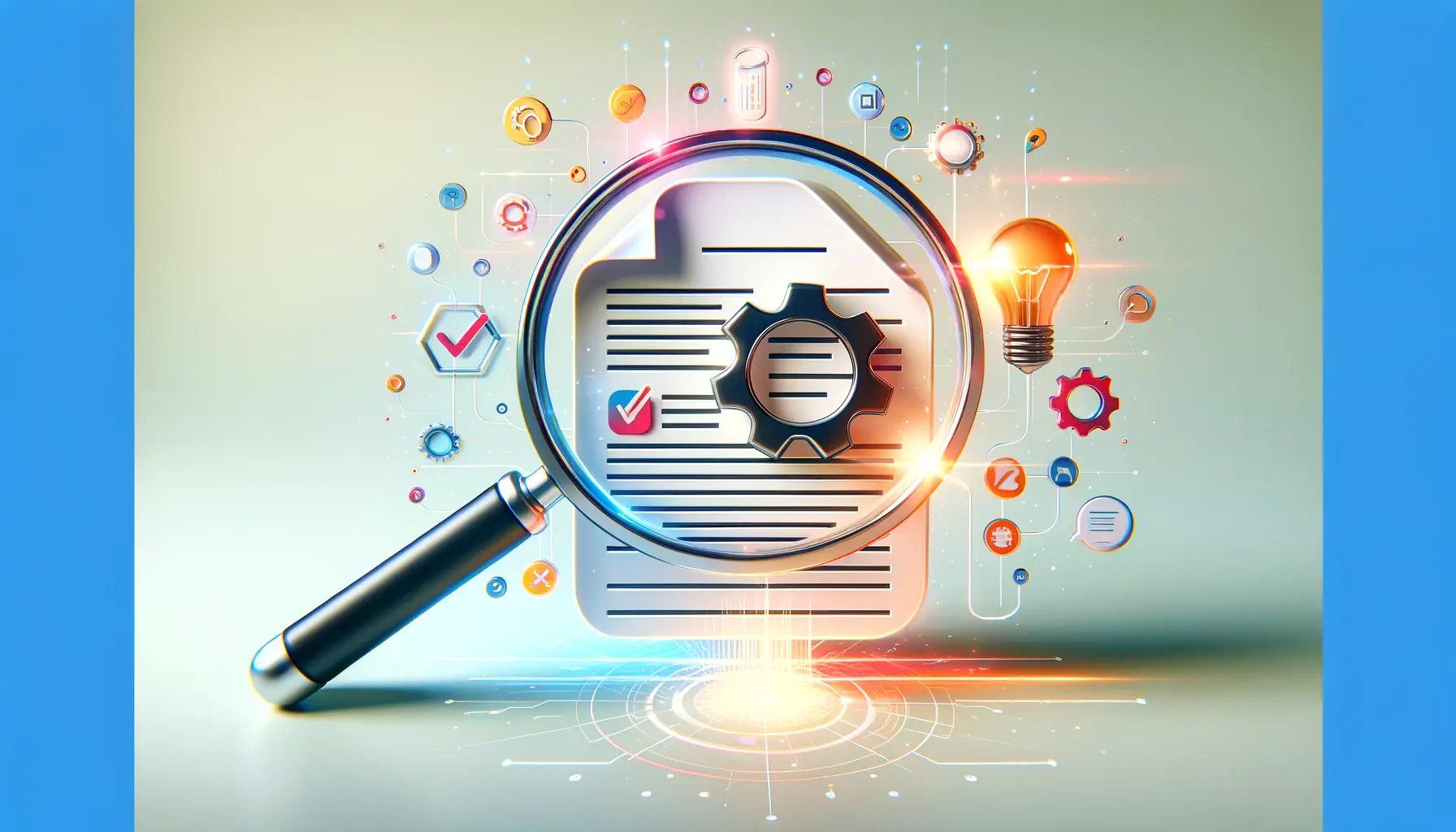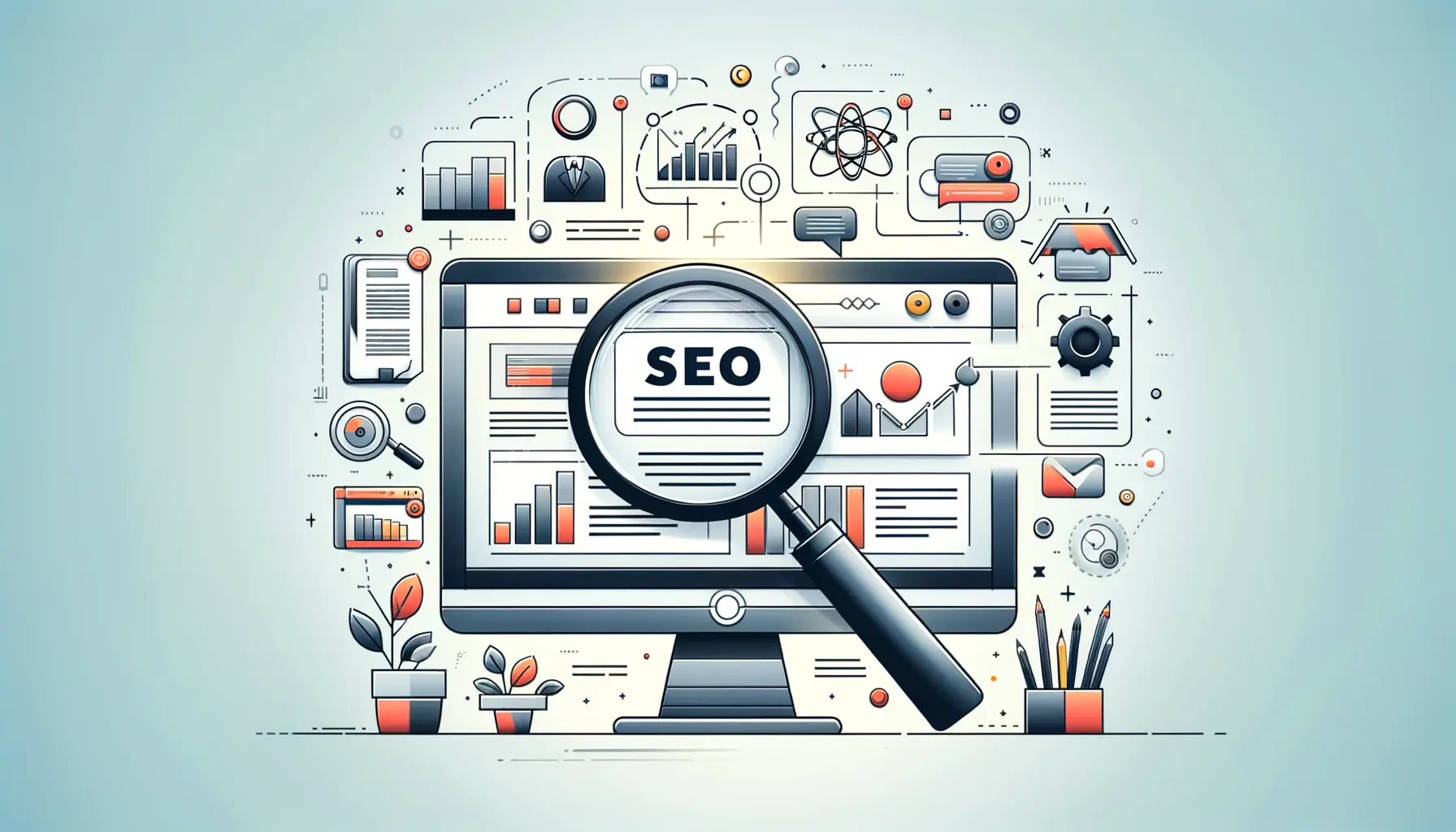In the realm of digital marketing, the emphasis on creating helpful content has never been more critical.
As search engines evolve, their algorithms increasingly prioritize the value and relevance of content, making it a cornerstone of effective on-page SEO strategies.
This shift underscores the importance of understanding what constitutes helpful content and how it can significantly impact your website’s visibility and user engagement.
Helpful content transcends the mere inclusion of keywords or the mechanical adherence to SEO best practices.
It involves crafting information that addresses the needs, questions, and interests of your target audience.
By focusing on providing real value, you not only enhance your site’s SEO performance but also foster a positive user experience, encouraging visitors to stay longer, engage more deeply, and return in the future.
- Understanding Helpful Content
- Key Elements of Helpful Content
- Researching and Understanding Your Audience
- Strategies for Crafting Helpful Content
- Optimizing Content for Search Intent
- Enhancing User Experience for Better Engagement
- Leveraging Analytics for Content Optimization
- Empowering Your SEO with Helpful Content
- Helpful Content and On-Page SEO FAQs
Understanding Helpful Content
What Makes Content Helpful?
At its core, helpful content is designed with the user’s intent in mind.
It answers their questions, solves their problems, and provides insights or information that they find valuable.
This type of content is often comprehensive, well-researched, and presented in a format that’s easy to digest and understand.
Whether it’s a detailed guide, an informative blog post, or a practical tutorial, the key is that it serves a clear purpose for the reader.
Moreover, helpful content is authentic and trustworthy.
It’s created by individuals or organizations with expertise in the subject matter, lending credibility and authority to the information presented.
This not only helps in building trust with your audience but also signals to search engines that your content is a reliable source of information, which can positively influence your rankings.
Benefits of Prioritizing Helpful Content
Investing in helpful content brings a multitude of benefits.
For starters, it significantly improves your on-page SEO by making your site more relevant and valuable to your target audience.
Search engines reward websites that provide high-quality, useful content with better visibility and higher rankings.
This, in turn, leads to increased organic traffic, as users are more likely to click on links that promise answers to their queries.
Additionally, helpful content enhances user engagement.
When visitors find the answers they’re looking for, they’re more likely to spend more time on your site, explore other pages, and share your content with others.
This not only boosts your site’s metrics, such as dwell time and page views but also fosters a loyal audience that views your brand as a go-to resource in your industry.
Creating helpful content is not just about improving SEO rankings; it’s about establishing a connection with your audience by providing real value and building trust over time.
Key Elements of Helpful Content
Creating content that resonates with your audience and meets search engine criteria involves several key elements.
Understanding these components can guide you in developing content that not only ranks well but also genuinely benefits your readers.
Here are the crucial elements that define helpful content:
- Relevance: Content must align with the interests, needs, and search intent of your target audience. It should answer specific questions, offer solutions, or provide insights that readers are actively seeking.
- Depth and Comprehensiveness: High-quality content covers topics thoroughly, offering readers a one-stop resource. This doesn’t necessarily mean longer content, but rather content that is rich in information and devoid of fluff.
- Accuracy and Trustworthiness: Facts, statistics, and claims should be verifiable and come from credible sources. Establishing trust is paramount, as it not only affects user perception but also influences how search engines evaluate your content.
- Engagement: The content should be presented in an engaging manner, using a tone and style that resonates with your audience. Incorporating visual elements, examples, and anecdotes can make the content more relatable and memorable.
- Accessibility: Good content is also accessible content. This means using clear headings, short paragraphs, bullet points, and images or videos to break up text and make your content easy to navigate and understand.
Implementing SEO Best Practices
While the focus is on creating helpful content, incorporating SEO best practices is crucial for ensuring that your content is discoverable.
This includes:
- Optimizing title tags and meta descriptions to accurately reflect the content’s focus and include target keywords.
- Using header tags (H1, H2, H3) to structure your content logically and include relevant keywords in a natural way.
- Ensuring your content is mobile-friendly, as a significant portion of web traffic comes from mobile devices.
- Improving page load speed to enhance user experience and reduce bounce rates.
- Incorporating internal and external links to provide additional value and context to your readers.
By blending these SEO strategies with the creation of helpful content, you can significantly boost your on-page SEO performance, driving both traffic and engagement.
Remember, the goal of on-page SEO is not just to rank higher but to provide a better experience for your visitors, turning them into loyal followers and customers.
Researching and Understanding Your Audience
At the heart of helpful content is a deep understanding of your audience.
Knowing who they are, what they need, and how they search for information is crucial for creating content that meets their expectations and solves their problems.
This understanding forms the foundation of any successful content strategy and ensures that your SEO efforts are not just about attracting traffic, but attracting the right kind of traffic.
To truly grasp your audience’s needs, consider the following approaches:
- Demographic Analysis: Identify the age, location, gender, and interests of your audience. Tools like Google Analytics can provide valuable insights into who your visitors are.
- Search Intent Research: Understand why people are searching for specific topics. Are they looking for information, trying to make a purchase, or seeking a solution to a problem? Tailor your content to meet these intents.
- Feedback and Engagement: Monitor comments on your website and social media channels. Engage with your audience to learn directly from them about their questions, concerns, and interests.
- Competitor Analysis: Look at what content is working well for your competitors. Analyze their most popular pages and posts to identify topics that resonate with your shared audience.
Creating Personas
One effective way to ensure your content addresses the needs of your audience is by creating detailed buyer personas.
These are fictional representations of your ideal customers based on real data and some educated speculation about demographics, behavior patterns, motivations, and goals.
Personas help you visualize your audience, making it easier to create content that appeals directly to the interests and needs of your readers.
They also guide content personalization, allowing you to tailor your messaging and offers to different segments of your audience for better engagement and conversion rates.
Use surveys, interviews, and your website analytics to gather information that helps in crafting accurate and useful personas.
Strategies for Crafting Helpful Content
With a solid understanding of your audience and the key elements that make content helpful, it’s time to delve into the strategies that can elevate your content creation process.
These strategies not only ensure that your content is valuable and engaging but also that it aligns with SEO best practices to boost your online visibility.
Here are effective strategies to consider:
- Answering Common Questions: Use tools like Answer the Public or Google’s “People also ask” section to find common questions related to your topic. Create content that provides clear, concise, and informative answers.
- Using Storytelling: Incorporate storytelling to make your content more engaging. Real-life examples, case studies, and personal anecdotes can make complex information more relatable and memorable.
- Creating Comprehensive Guides: Develop in-depth guides that cover a topic extensively. These resources are valuable to your audience and are likely to earn backlinks, further enhancing your SEO.
- Updating Existing Content: Regularly review and update your content to keep it current. Adding new information, statistics, and resources can revive older posts and improve their search engine rankings.
Visual and Interactive Elements
Incorporating visual and interactive elements can significantly enhance the helpfulness and appeal of your content.
Visual aids like images, infographics, charts, and videos can help explain complex information and keep readers engaged.
Interactive elements such as quizzes, polls, and calculators add an engaging layer to your content, encouraging users to spend more time on your site.
Remember, the goal is to make your content as accessible and engaging as possible.
Visual and interactive elements should complement your text, not distract from it.
Ensure that all visual content is optimized for SEO by using descriptive file names and alt tags that include relevant keywords.
Visual and interactive content not only enriches the user experience but also supports your SEO efforts by increasing engagement and dwell time on your site.
Optimizing Content for Search Intent
Aligning your content with the search intent of your audience is a critical step in creating helpful content.
Search intent refers to the purpose behind a search query.
Understanding and matching this intent ensures that your content meets the expectations of your visitors, leading to higher satisfaction and improved SEO performance.
To optimize your content for search intent, consider the following types of intent:
- Informational Intent: Users are looking for information or answers to questions. Create educational content that provides valuable insights, explanations, or tutorials.
- Navigational Intent: Users are searching for a specific website or page. Ensure your brand and product pages are optimized for branded keywords.
- Transactional Intent: Users intend to make a purchase or engage in another type of transaction. Highlight your product benefits, include clear calls-to-action (CTAs), and streamline the purchasing process on your site.
- Commercial Investigation: Users are considering a purchase and are looking for the best options or reviews. Offer comparative content, reviews, and buyer guides that help in the decision-making process.
Utilizing Keyword Research Tools
Keyword research tools like Google Keyword Planner, SEMrush, or Ahrefs can provide insights into the search terms and phrases your audience uses.
These tools can help identify variations of your primary keywords that align with different search intents.
By incorporating these variations into your content, you can address a broader range of user needs and questions.
Additionally, analyzing the SERPs for your target keywords can reveal the type of content that ranks well for each intent.
This analysis can guide your content format and structure, ensuring it matches what users and search engines expect for those queries.
Adapting your content to match search intent not only improves user satisfaction but also signals to search engines that your content is relevant and valuable, enhancing your visibility in search results.
Enhancing User Experience for Better Engagement
Enhancing the user experience (UX) on your website is pivotal for retaining visitors and encouraging deeper engagement with your content.
A positive UX ensures that once users land on your site, they find it easy to navigate, enjoyable to read, and simple to interact with.
This not only supports your SEO goals by reducing bounce rates and increasing dwell time but also builds trust and credibility with your audience.
To enhance UX, focus on the following areas:
- Website Speed: A fast-loading site is essential for keeping users engaged. Use tools like Google PageSpeed Insights to identify and fix speed issues.
- Mobile Responsiveness: With the increasing prevalence of mobile browsing, ensure your site is optimized for mobile devices to offer a seamless experience across all platforms.
- Intuitive Navigation: Structure your site with clear, logical navigation to help users find the information they need quickly and easily.
- Readable Content: Use short paragraphs, bullet points, and subheadings to break up text and make your content easy to scan.
Collecting and Acting on User Feedback
Gathering feedback directly from your users can provide invaluable insights into how you can improve your site’s UX.
Implement feedback mechanisms such as surveys, comment sections, or social media polls to understand your audience’s needs and preferences.
Act on this feedback to make continuous improvements, showing your users that you value their input and are committed to providing them with the best experience possible.
Remember, a website that is enjoyable to use and easy to navigate is more likely to convert visitors into loyal followers and customers.
By prioritizing UX in your content strategy, you not only enhance the effectiveness of your SEO efforts but also build a strong foundation for long-term success.
Improving user experience is an ongoing process that requires regular review and updates. Stay informed about UX best practices and be prepared to adapt as user expectations and technology evolve.
Leveraging Analytics for Content Optimization
Utilizing web analytics is crucial for understanding how your content performs and identifying opportunities for optimization.
Analytics tools, such as Google Analytics, offer a wealth of data on user behavior, traffic sources, engagement metrics, and more.
By analyzing this data, you can make informed decisions to refine your content strategy and enhance your on-page SEO efforts.
To effectively leverage analytics for content optimization, focus on the following metrics:
- Page Views and Unique Page Views: These metrics provide insight into the popularity of your content and its ability to attract new visitors.
- Bounce Rate: A high bounce rate may indicate that your content is not meeting the expectations of your visitors or that your page is not user-friendly.
- Average Time on Page: This metric helps gauge the engagement level of your content. Longer time spent on a page suggests that users find your content valuable and engaging.
- Conversion Rate: For content aimed at driving specific actions, such as newsletter sign-ups or product purchases, monitoring the conversion rate is essential to assess its effectiveness.
Adjusting Content Based on Insights
Armed with analytics data, you can take targeted actions to improve your content and its performance.
For example, if certain pages have a high bounce rate, consider revising the content to better match search intent, improving the page layout, or enhancing the call-to-action (CTA) to make it more compelling.
Similarly, pages with high engagement but low conversion rates may benefit from clearer CTAs or simplified conversion paths.
Additionally, analytics can reveal content gaps or topics that resonate well with your audience, guiding your future content creation efforts.
By continuously monitoring and analyzing your content’s performance, you can adapt your strategy to meet the evolving needs of your audience and the changing dynamics of search engines.
Assuming that once content is published, no further work is needed is a common mistake. Regularly reviewing and updating your content based on analytics insights is key to maintaining its relevance and effectiveness.
Empowering Your SEO with Helpful Content
In the digital landscape, where competition for visibility is fierce, the creation of helpful content emerges as a beacon for achieving on-page SEO success.
This article has traversed the multifaceted approach to crafting content that not only resonates with your audience but also aligns with search engine algorithms to enhance your online presence.
The journey from understanding your audience to leveraging analytics underscores the dynamic nature of content strategy in the realm of SEO.
Key Takeaways for Maximizing On-Page SEO
Reflecting on the insights shared, several key takeaways stand out for businesses and content creators aiming to optimize their on-page SEO:
- Relevance and depth of content are paramount in meeting the user’s search intent and fostering engagement.
- Understanding your audience through research and feedback is crucial for tailoring content that addresses their needs.
- Strategic use of keywords, while maintaining a natural and engaging tone, enhances both readability and search engine rankings.
- Optimizing the user experience on your website encourages longer visits and higher interaction rates, signaling quality to search engines.
- Regular analysis of performance metrics through analytics tools enables continuous improvement and adaptation of your content strategy.
As we navigate the evolving landscape of SEO, the emphasis on helpful content as a priority for on-page optimization remains steadfast.
By integrating the strategies and insights discussed, businesses can not only achieve higher rankings but also build lasting relationships with their audience, turning visitors into loyal customers and advocates for their brand.
Charting the Path Forward
The journey towards SEO excellence is ongoing, with helpful content serving as both the compass and the map.
As search engines continue to refine their algorithms, the ability to produce content that is both informative and engaging will distinguish the leaders from the followers in the digital domain.
Embrace the challenge, for in the world of SEO, content is not just king—it is the key to unlocking your website’s potential.
Want your website to top Google search rankings? Leave the SEO to our professional agency!
Helpful Content and On-Page SEO FAQs
Explore common queries about integrating helpful content into your on-page SEO strategy.
Helpful content meets user search intent with accurate, comprehensive, and engaging information, enhancing site relevance and authority.
It improves user engagement, search rankings, and satisfies search intent, signaling to search engines the value and relevance of your site.
By providing valuable information, it increases dwell time and reduces bounce rates, contributing to a positive user experience.
Yes, by addressing user needs and search intent, it can lead to higher organic rankings and increased visibility in search results.
Analyze audience needs, use keyword research tools, and monitor industry trends to identify relevant and sought-after topics.
It identifies the terms and phrases your audience uses, ensuring your content is discoverable and meets specific search queries.
Regularly review and update content to keep it current, accurate, and aligned with the latest search trends and user interests.
Yes, clear formatting with headings, bullet points, and short paragraphs makes content more accessible and user-friendly.










